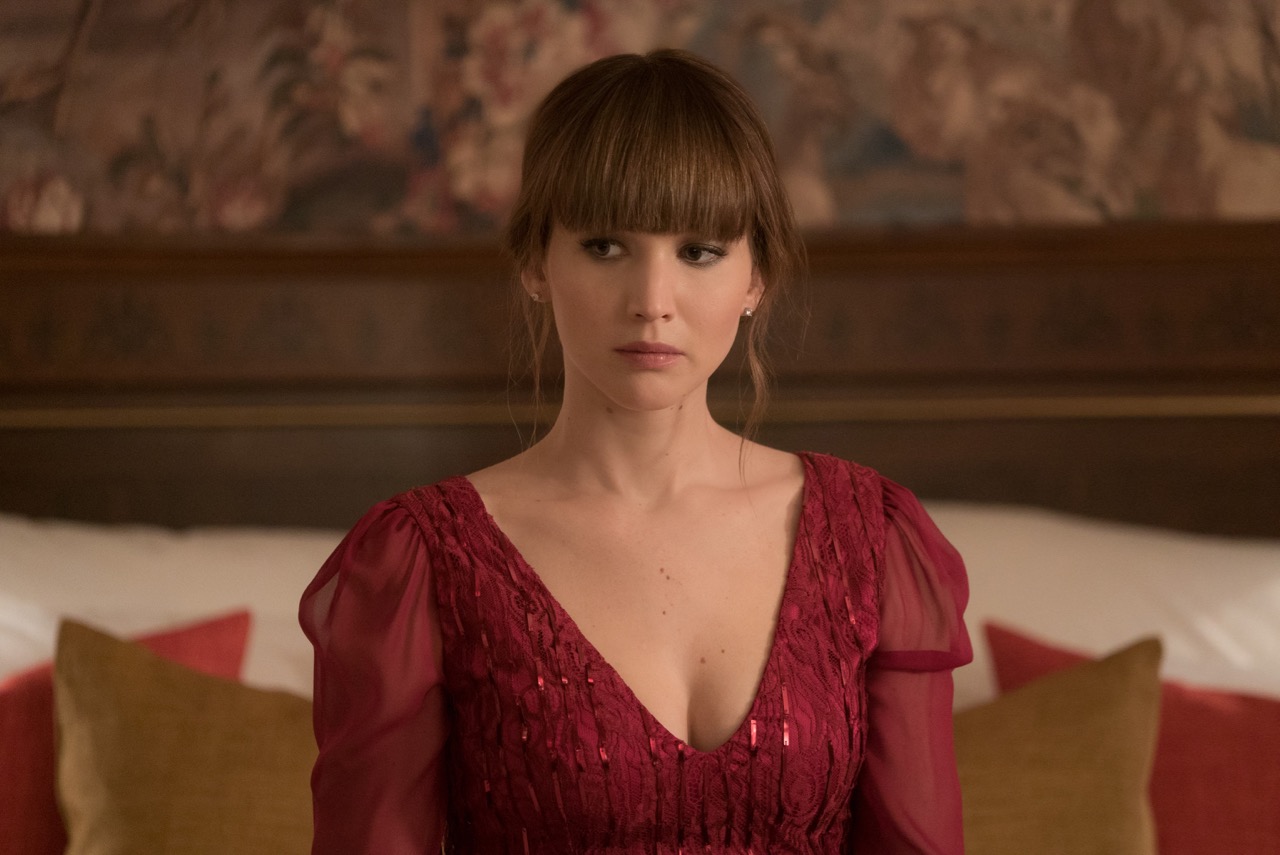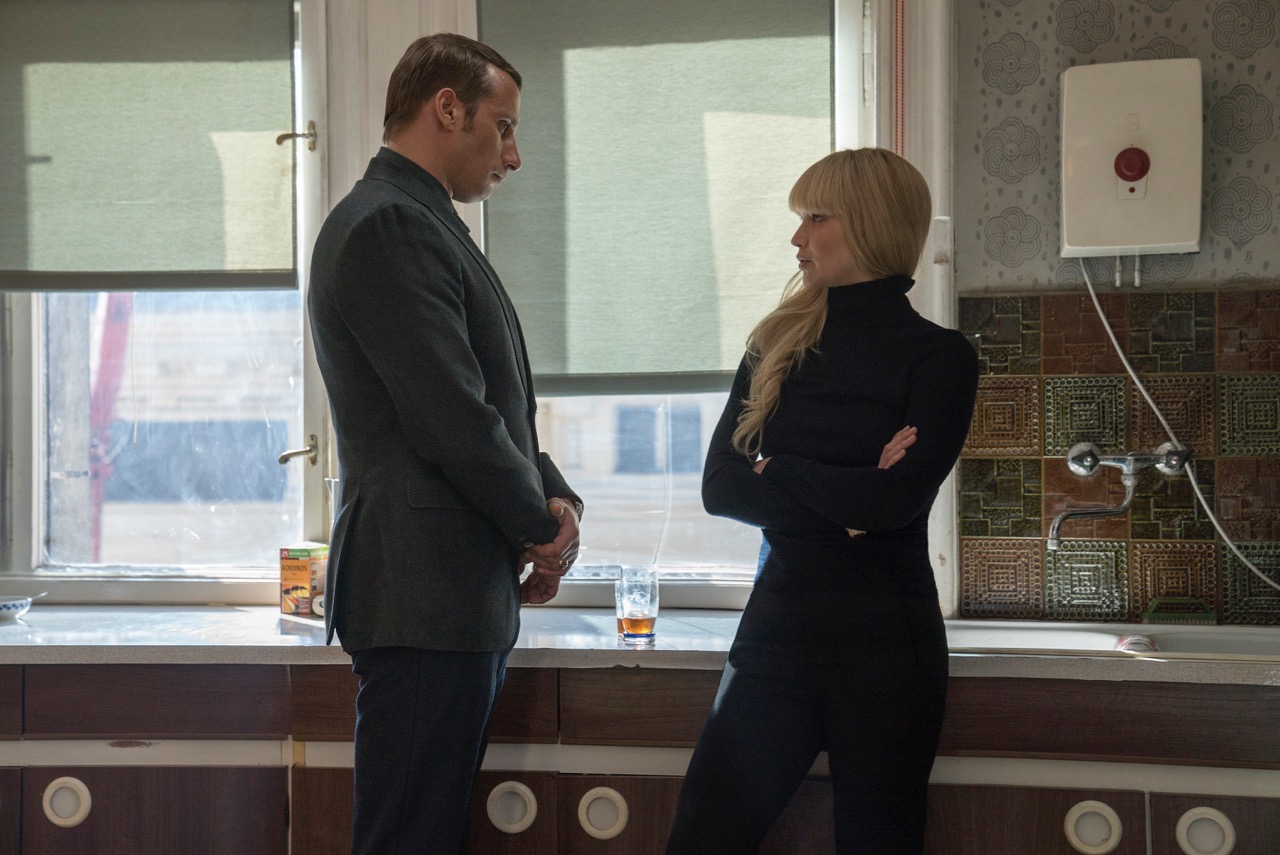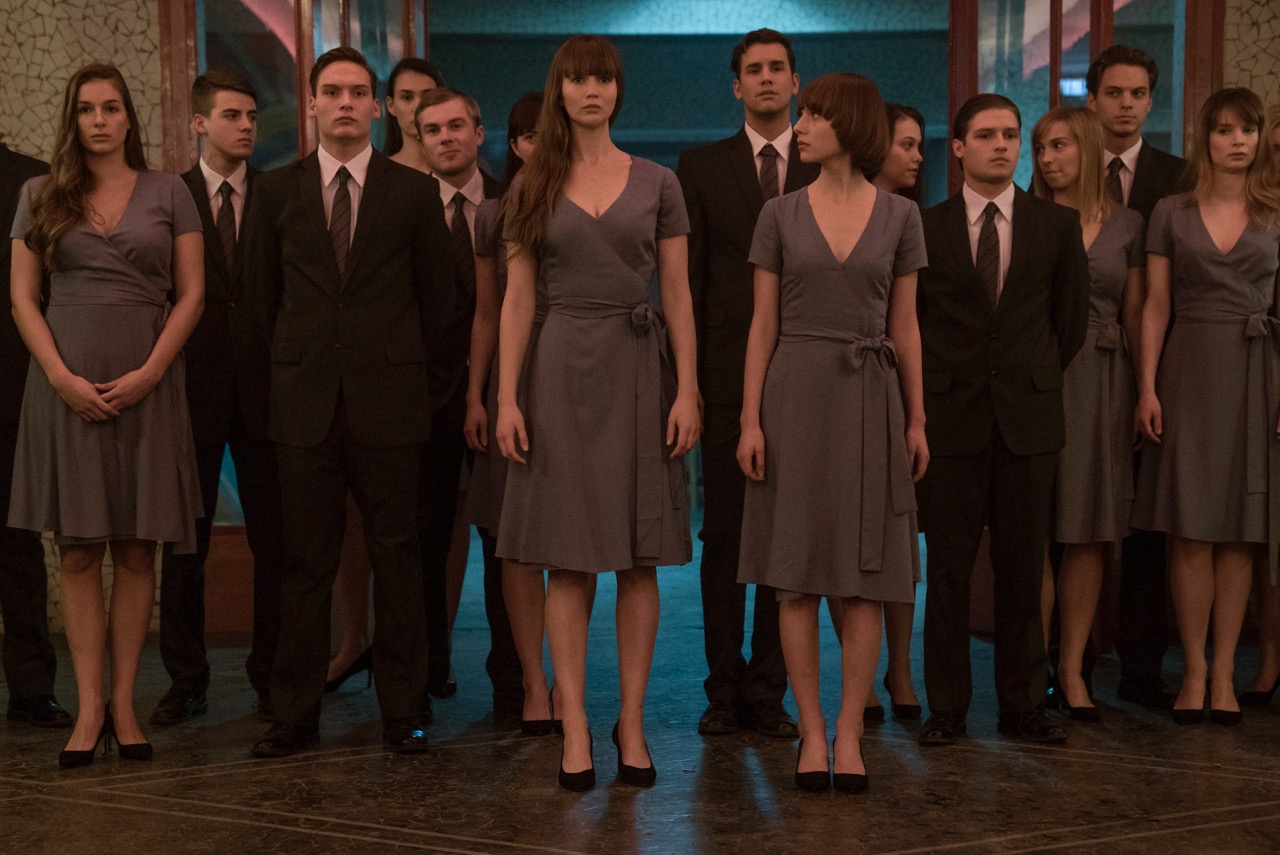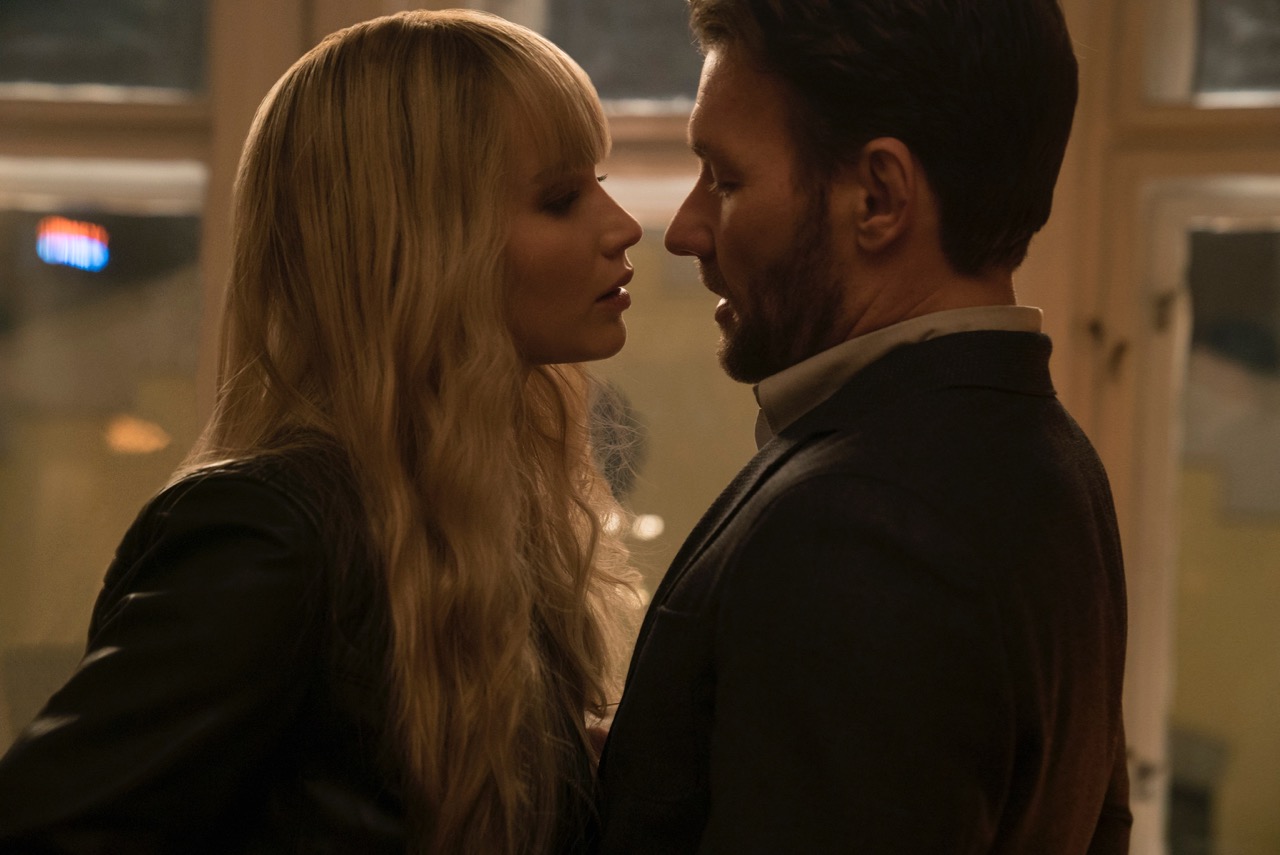 Melissa Anderson
Melissa Anderson
From pliés to honey traps: Jennifer Lawrence plays a Bolshoi ballerina turned post-Soviet spy.

Jennifer Lawrence in Red Sparrow. TM & © 2018 Twentieth Century Fox Film Corporation. Photo: Murray Close.
Red Sparrow, directed by Francis Lawrence
• • •
Jennifer Lawrence is the emblematic performer of current screen dystopias. She became one of the highest-paid actresses in the world owing to her recurring role as Katniss Everdeen, the flinty teen heroine of The Hunger Games tetralogy (2012–15), set in an unspecified, postapocalyptic future in which the citizens of Panem, a nation formed from the ruins of North America, are mandated to watch televised kid-on-kid savagery. The A-lister reteams with Francis Lawrence, who directed all but the first film of that franchise, for Red Sparrow, a dour, disagreeable spy thriller that takes place in actual countries—the former Eastern Bloc—in a time that’s just about now. Rooted in some version of reality, Red Sparrow nonetheless suggests a bleaker hellscape than anything found on imaginary Panem.
The movie opens with its heroine, Dominika Egorova, played by Lawrence, enjoying a moment of tranquility—one of the few instances in this nearly two-and-a-half-hour film when her body isn’t imperiled or brutalized. She sits on her bed in a meditation pose, listening to music before rushing to tend to her disabled mother, with whom she shares her spartan Moscow flat. Lawrence’s delivery of her perfunctory first line—“You’re awake, Mama”—signals, in just five syllables, not only the lazy, low-camp Russian-accented English spoken by most of the international (though largely Anglophone) cast but also the overall leadenness of the film.

Matthias Schoenaerts and Jennifer Lawrence in Red Sparrow. TM & © 2018 Twentieth Century Fox Film Corporation. Photo: Murray Close.
After we watch Dominika carry out various tasks that further underscore her filial devotion, we learn that Dominika is more than just a dutiful daughter. She races off to the Bolshoi, to perform in what will be her final ballet: her partner drops her and her leg is irreparably damaged. But the career-destroying error was no accident, as the prima ballerina’s uncle Vanya (Matthias Schoenaerts)—a high-ranking official in Russia’s intelligence agency and the much younger brother of Dominika’s dead dad—proves to his niece with grainy black-and-white photos that reveal plotting by two of her corps members. (Though his character’s name evokes Chekhov and czarist Russia, Schoenaerts bears more than a passing physical resemblance here to Putin.) The evidence will lead her to commit the first of two bludgeonings in a steam-filled locker room.
That is not the sole example of repetition. Red Sparrow abounds in quasi-profundities uttered more than once. “Every human being is a puzzle of need” lingers afterward as one of the more successful of these maxims; it is initially articulated by a character known only as Matron (a role that Charlotte Rampling, in the movie’s lone instance of felicitous casting, vivifies with droll flourishes). Matron oversees the training at State School Four, or “Sparrow School,” where Dominika, now desperate for funding for herself and matushka since her Bolshoi sponsorship has ended, has been dispatched by Vanya to learn how to seduce—and compromise—the enemy. (Before shipping her off to sex-as-a-weapon finishing academy, Vanya had sent his niece on a test run of honey-trapping, an incident that sordidly plays out like a Weinstein-at-the-Peninsula tableau.)

Jennifer Lawrence and cast in Red Sparrow. TM & © 2018 Twentieth Century Fox Film Corporation. Photo: Murray Close.
“The Cold War did not end. It shattered into one thousand pieces,” Matron lectures her charges—making explicit the nominal political argument of the film, axiomatic to any spectator who has been sentient since 1991. (Red Sparrow is based on the 2013 novel of the same name, which I haven’t read, by Jason Matthews, who turned to fiction writing after a thirty-three-year career with the CIA; the screenplay is by Justin Haythe.) “Only Russia is willing to make the sacrifices to be invincible,” she continues, as the comely young trainees, mostly women, “learn to love on command,” exercises played out primarily with the opposite sex. A hand job Dominika administers is recorded and projected on an IMAX-size screen for her classmates to analyze. Forced to succumb, at Matron’s insistence, to a fellow recruit who, a day earlier, had tried to rape her, the spy apprentice reveals that she may have smuggled in some samizdat Susan Brownmiller: “Power. That’s what he wants,” Dominika declares, an assessment that detumesces her assailant.
But despite her familiarity with the tenets of intro-level gender studies, Dominika is not a feminist of any kind—the decrees of the female-led espionage thriller demand that the heroine adhere only to the politics of pummelings, as last summer’s graphic-novel-based Atomic Blonde, starring Charlize Theron, also made clear. The earlier film, though, set in Berlin just before and after the toppling of the Wall, benefited from kicky synth-pop energy and a riveting central performance. Theron brought an appealing aloofness to her role as an MI6 agent, a sly froideur that still generated heat. Lawrence, in contrast, plays her part as a complete blank: she’s a void made even more robotic by her silly pseudo-Slavic intonation.

Jennifer Lawrence and Joel Edgerton in Red Sparrow. TM & © 2018 Twentieth Century Fox Film Corporation. Photo: Murray Close.
However distinct, Atomic Blonde and Red Sparrow each have an increasingly labyrinthine storyline. Yet only the latter was accompanied by a comma-deficient plea from the director to journalists, in a bit of PR dark arts that has become all too common, to “keep all major plot points including the ending secret.” It would be impossible for me to “spoil” anything I couldn’t coherently recapitulate, but I hope Francis Lawrence won’t be too upset if I mention that Dominika’s first assignment after “whore school” (her words) takes her to Budapest, where she is to get friendly with Nate Nash (Joel Edgerton), a CIA operative who serves as the point of contact for a Russian mole.
With Dominika’s relo to Hungary, Red Sparrow’s violence grows more baroque: one character, subject to a whirring skin grafter, has strips of his epidermis brandished by his attacker as if the thug were showing off a prize Fruit Roll-Up. Against this barbaric backdrop, Dominika and Nate, enemy spies, fall in love. Or do they? Watching the two engage in some countertop rutting, I thought of another of Matron’s directives: “You must inure yourself to what you find repellent.” Red Sparrow, a joyless genre exercise, inadvertently advances the premise that most, maybe all male-female mating could be thought of as a ruse, the basest kind of transaction, the bleakest form of pleasure. And thanks to that unwitting thesis, Red Sparrow, a film putatively about the further immiseration of the post-Soviet world, allowed this restless viewer to engage in an outlandish thought experiment: imagining the post-heterosexual era.
Melissa Anderson is the film editor of 4Columns. From November 2015 until September 2017, she was the senior film critic for the Village Voice. She is a frequent contributor to Artforum and Bookforum.